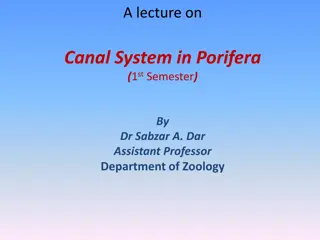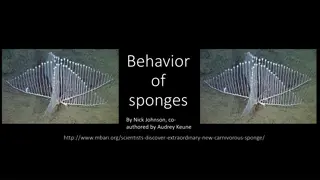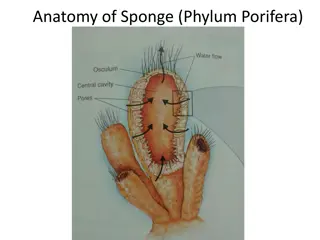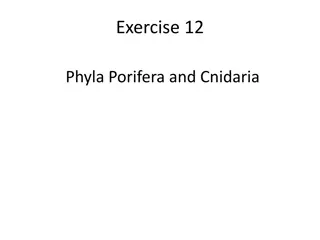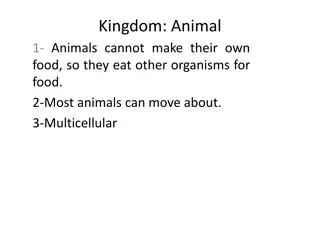Understanding Canal System in Porifera: A Detailed Exploration by Dr. Sabzar A. Dar
The canal system in Porifera plays a vital role in water circulation within the body of sponges. Dr. Sabzar A. Dar, Assistant Professor of Zoology, elucidates the intricacies of canal systems in different types of sponges, such as Ascon, Sycon, Leucon, and Rhagon, highlighting their structures and f
0 views • 9 slides
Insights into the Behavior and Life Cycle of Sponges
Sponges exhibit unique behavior characteristics both externally and internally. They are sedentary organisms with cylindrical bodies that can be soft or hard, flexible or brittle. Sponges reproduce via sexual and asexual methods, and go through a life cycle from larvae to adulthood. Their reproducti
0 views • 6 slides
Comparative Anatomy of Sponge and Cnideria Phylum
Explore the intricate anatomical structures of sponges (Phylum Porifera) and Cnideria, including polyps and medusas. The visuals provide an in-depth look at the unique characteristics and functions of these fascinating marine organisms.
0 views • 4 slides
Introduction to Porifera: The Simple Multicellular Animals Known as Sponges
Porifera, a phylum of simple multicellular animals known as sponges, lack proper tissues and organs. They are filter feeders found in aquatic environments, with varied shapes and structures. Nutrition, digestion, respiration, excretion, and reproduction in sponges occur uniquely, making them intrigu
0 views • 18 slides
Exploring Diversity in Porifera and Cnidaria Phyla Through Lab Observations
You were exposed to the wide array of animals in the Porifera and Cnidaria phyla in a lab exercise. Understanding the distinguishing features of each group, their roles in the environment, and the structures crucial for identification is key. Focus on bold-faced structures and labeling on diagrams a
0 views • 12 slides
Overview of Animal Kingdom's Phyla and Characteristics
Animals in the Kingdom Animalia have diverse characteristics and are classified into different phyla based on specific traits and features. This includes Porifera (sponges), Cnidaria (jellyfishes), Platyhelminthes (flatworms), Nematoda (roundworms), Annelida (earthworms), Mollusca (snails, octopus),
0 views • 10 slides
